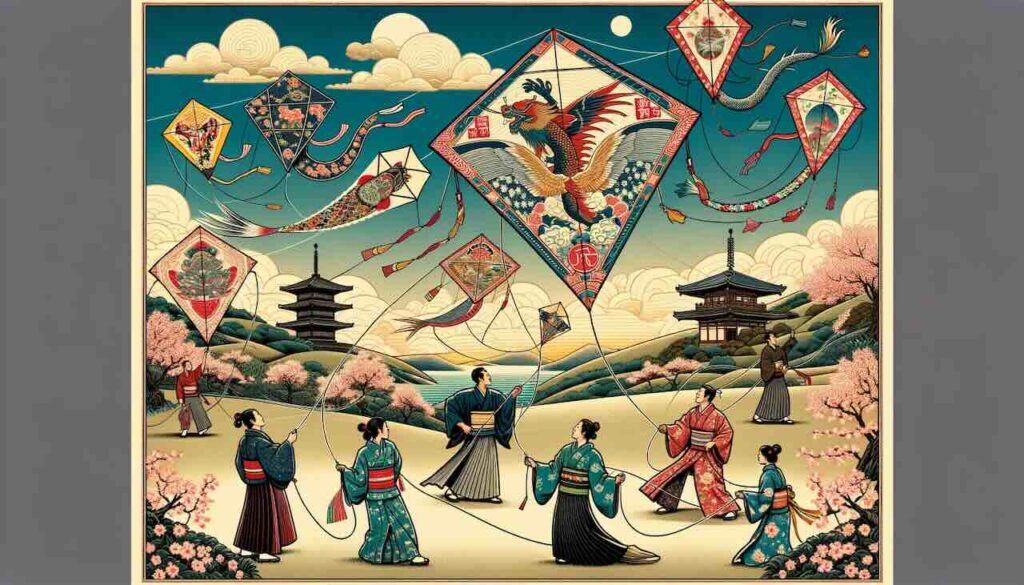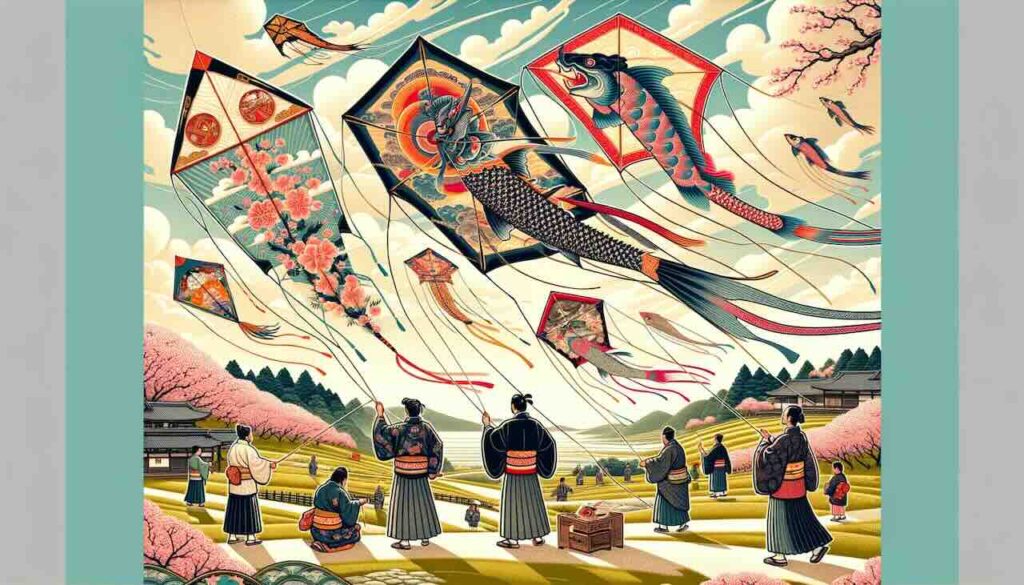Few activities blend simplicity, beauty, and cultural meaning as seamlessly as kite flying. What begins with nothing more than wind, string, and fabric has, for centuries, captivated people across continents — whether as entertainment, art, science, or even warfare.
Let’s take a closer look at the long and rich history of kite flying, its introduction to Japan, and how this ancient practice continues to evolve today.
What Is Kite Flying?
At its core, kite flying involves using the wind to lift a lightweight object—typically constructed of paper, fabric, or plastic stretched over a frame of wood, bamboo, or modern materials—into the sky, controlled by a string or line.
From simple childhood pastimes to sophisticated festivals and competitions, kites have been used for recreation, ceremony, and serious study across cultures and centuries.
The Origins of Kite Flying: Ancient China
The precise origins of kite flying are difficult to pinpoint, but most historians agree that kites were first invented in ancient China, likely more than 2,000 years ago.
Early Chinese Kites
- According to legend, during the Spring and Autumn Period (770–476 BCE), Chinese philosophers such as Mozi (墨子) or Lü Ban (鲁班) crafted early wooden flying devices resembling birds.
- Over time, kites made of bamboo frames and silk or paper coverings replaced wood, allowing for greater flexibility and longer flight.
- Early Chinese kites served not only as recreational tools but also had practical military uses, including:
- Sending messages across battlefields.
- Measuring distances.
- Testing wind direction.
- Psychological warfare.
By the Tang Dynasty (618–907 CE), kite flying had spread beyond military use and became a popular pastime throughout Chinese society.
The Introduction of Kites to Japan
Kites likely arrived in Japan via cultural exchanges with China, particularly during the Nara period (710–794 CE), alongside the introduction of Buddhism, Chinese arts, and writing systems.
Japanese Kite Culture Across Eras
- Nara to Heian Periods: Initially, kites held ritual or religious significance, believed to carry prayers or ward off misfortune.
- Heian Period (794–1185): Kite flying gradually became a favored pastime among the nobility.
- Edo Period (1603–1868): Kite flying blossomed into a popular form of entertainment among commoners, especially during New Year celebrations and festivals.
- Regional variations of Japanese kites, known as wa-dako (和凧), developed, each featuring unique shapes, designs, and local symbolism.
The Global Spread of Kites
As trade and exploration expanded, kites traveled far beyond East Asia, evolving differently across cultures:
Southeast Asia
- Bali, Indonesia: Giant ceremonial kites are flown as part of religious festivals to honor the gods and pray for good harvests.
- Thailand: Vibrant kite-fighting festivals feature aerial duels where flyers attempt to cut each other’s lines.
South Asia
- India: Kite flying, especially during festivals like Makar Sankranti, blends artistry and sport, with elaborate designs and competitive cutting matches.
Europe and America
- 18th-century Europe: Kites were used for scientific experiments, most famously by Benjamin Franklin in his lightning studies.
- 19th-century Europe: Kites contributed to early meteorology, aeronautics, and photography.
The Middle East and Africa
- Variations of kite flying can also be found in Afghanistan, Egypt, and throughout Sub-Saharan Africa, often blending recreation with local storytelling and traditions.
Modern Kite Flying: From Art Form to Extreme Sport
Today, kite flying is far more than a simple childhood pastime:
Festivals and Art
- Global kite festivals showcase elaborate designs, some large enough to require multiple handlers.
- Modern materials allow for intricate artistic expressions and massive, colorful displays.
Competitive Sport
- Kite fighting remains popular in countries like India, Pakistan, and Thailand.
- Organized competitions judge on both flight skill and visual artistry.
Science and Technology
- Kites continue to serve experimental and educational purposes, aiding in:
- Meteorology.
- Renewable wind energy research.
- Aerodynamics education.
Extreme Sports
- Modern sports such as kiteboarding, kitesurfing, and snowkiting combine traditional kite dynamics with adventure sports, using wind-powered kites to glide over water, snow, or land.
Kite Flying Vocabulary: East and West
In English, both the object and the activity are simply called “kite” and “kite flying.”
In Japan:
- The general word for kite is “tako” (凧).
- Traditional Japanese-style kites are often referred to as “wa-dako” (和凧) — literally, “Japanese kite.”
- Historically, regional designs had distinctive shapes and names, such as Edo-dako (square-shaped kites popular in Edo/Tokyo).
Summary
From its likely invention in ancient China, through its religious and recreational role in Japan, to its global spread as a scientific tool, competitive sport, and artistic tradition, kite flying represents one of humanity’s oldest and most enduring connections to the sky.
Whether flown for fun, prayer, research, or competition, the act of controlling a kite remains universally captivating — a timeless reminder of how something so simple can carry centuries of history and meaning with every gust of wind.


